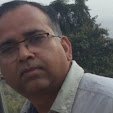Rahul Gandhi is back with a Latin American brush of facial touch. Eyes have sunk deep. Curled hair is swept back and oiled. Skin is more tanned. Trademark beard that boasted of careless grey vegetation is gone. Pitch of the voice is moderated. He now looks reflective, with the brash shadow cast off. Gandhi is experimenting, progressing or swinging on the learning curve, amidst wave of personal onslaughts set off from within his party and the outside. He's an enigma that keeps Indian politics enchanted.
RAHUL Gandhi, former Congress president and the Lok Sabha MP from Wayanad, Kerala, has offered another glimpse into his withdrawn world of thoughts. With YouTube debut, Gandhi has worn the creative attire. He has asked questions. He's seen probing the powerful Prime Minister Narendra Modi. There are subtitles and info-graphics to explain the subject. There is an air of a serious discourse. So, there are maps, backgrounders, anecdotes and contexts to put forth his arguments. And, he stays on China, asking why did Xi Jinping send his soldiers in East Ladakh, for Modi had excessively invested his economic capital in Beijing in past six years at the helms in New Delhi while also as the chief minister of Gujarat.
The three minutes and 38 seconds long video invited rebuttal from the Union Minister of External Affairs S Jaishankar who argued the case of the Modi dispensation with 10 tweets. Besides, there was an avalanche of derision from top functionaries of the BJP. The volume and intensity of the responses demonstrate indubitably that Gandhi's experiment isn't entirely wasteful.
THE intellectual appearance of a political leader is as good as the depth of the script writers. For past one decade, the script for him and his mother Sonia Gandhi has been written by a former Union Minister who is known for putting his foot in the mouth too often. That script writer had faced the wrath of even his mother for making insensitive comments about Hindu symbols when he was a powerful minister in the Manmohan Singh government. It can be conveniently inferred that the comments, including the poor needs escape velocity to escape poverty, must have been authored by such script writers who delight in pulling the verbal strings of their aka. So, derision thrown at Gandhi must also largely account for the disconnect of his script writers.
Flower of India's foremost political dynasty, Gandhi is principally an experimenter, introducing the borrowed concept of primaries in the Indian Youth Congress and afterwards in the candidate selection for the 2009 Lok Sabha elections. The 15th Lok Sabha and the 2009 winning list of the Congress candidates boasted a number of youngsters who rose from the ranks of the Youth Congress. Meenakshi Natarajan, winning Madhya Pradesh's poorest Parliamentary constituency Mandsaur, hogged the limelight, coming to Parliament on an auto-rickshaw. That was a full three years before a policy lobbyist rode piggyback to Anna Hazare to appear as an Aam Admi politician. Rahul Gandhi lacked manpower in salesmanship to allow Arvind Kejriwal to run away with the Aam Admi plot. A dynast would also otherwise have failed to win the plot.
Politics in India since the formation of the Congress in 1885 has been held hostage by the feudal lords. Post-Independence, they conveniently carved out their principalities under the benign patronage of the legacy of Jawahar Lal Nehru. The folly of Rahul Gandhi was that he paid more interests in the politics of the US than the architecture of his party and the Indian politics. His push with primaries to promote youngsters outside the established political families made him an outsider within the Congress. The entrenched had their interests better protected with Sonia Gandhi. She will not speak a word outside the slip given to her.
People will accept Rahul Gandhi if he wins the battle within the Congress. Changing the course of the status quoist blood running in the veins of the Congress is a herculean task. For a change, he should read the Roman mythology more to first take on the feudal lords within his party. Modi can wait for him to win his battle first within the Congress.






